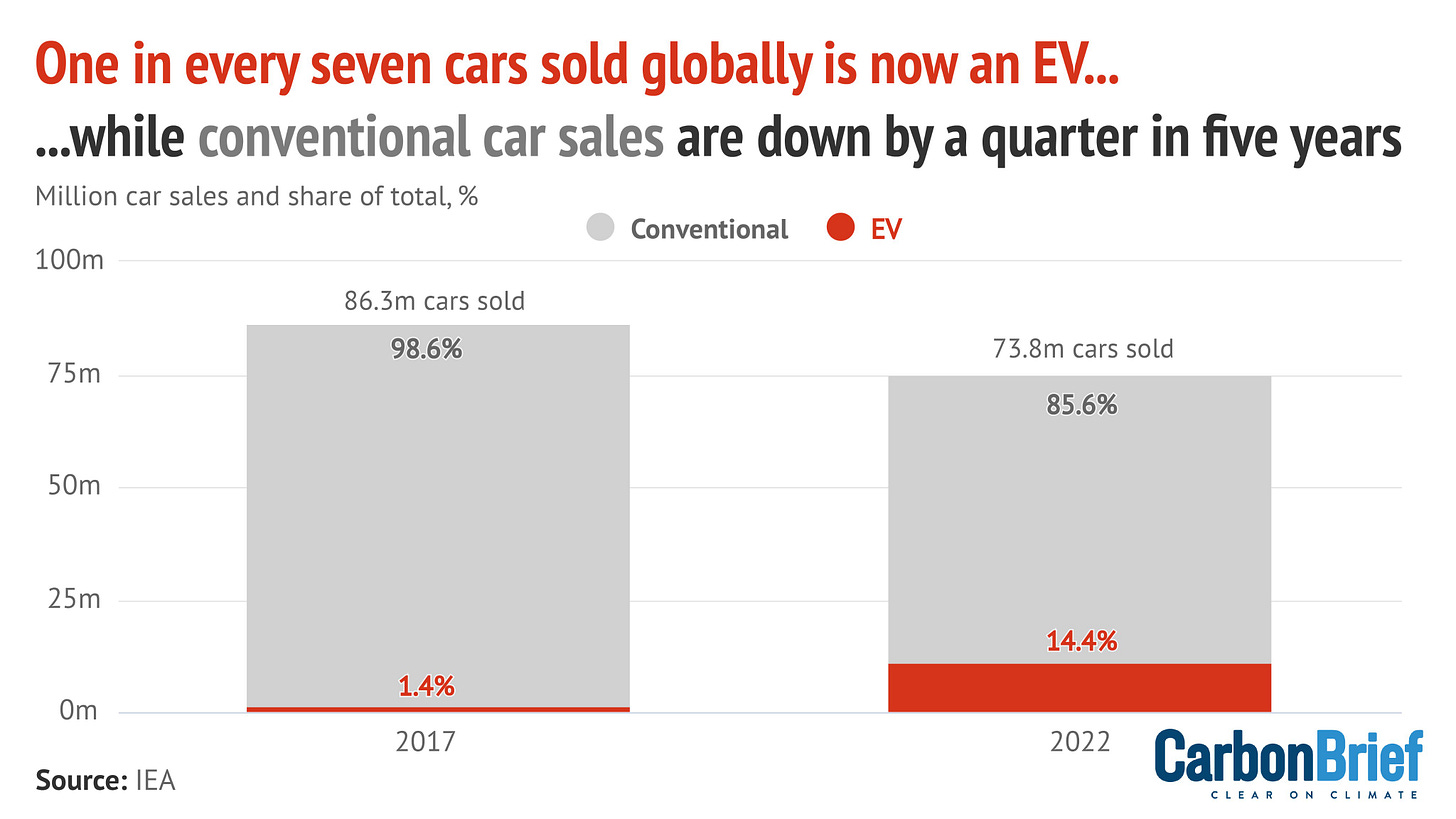Save $12 Trillion with Rapid Clean-Energy Transition
It pays to move quickly to cut costly fossil fuel use
Using real-world data for both fossil fuels and renewables, a University of Oxford study found that a rapid green-energy transition to 100% renewables could save $12 trillion in energy costs by 2050.
It’s important to know this is $12 trillion in net savings despite the not-so-cheap cost of building an entirely new energy system with estimated costs between $3 to $5 trillion a year.
The study shows that once a 70% to 80% renewable system is in place, energy costs plummet because the fuel costs are zero.
Study co-author Robert Way told me that their cost-savings estimate was very conservative.
“Scaling-up key green technologies will continue to drive their costs down, and the faster we go, the more we will save.”
Pretty well everyone has consistently overestimated the future costs and difficulties of deploying key clean-energy technologies.
The big reason for this is a failure to understand that these are two different groups of technologies. (Yep, me too.)
Fossil fuels are sources of energy and tradable commodities. (means easy to stick in a barrel, pipeline or tanker and sell.)
Renewables tap into sources of free energy (sun, wind, water), and are energy carriers. (it’s all about flow)
As energy carriers renewables benefit what’s known as the “experience curve”. This is where increasing production volumes leads to gains in efficiency. That’s why their costs keep falling. Meanwhile, the cost of their energy sources (wind, sun, water) is still free.
Need-to-Know: Renewables tap into sources of free energy
The costs of solar, wind and batteries have fallen 10% per year over past three decades. Technological improvements brought real-cost reductions because the energy sources (wind and the sun) continue to be unlimited, freely available and FREE.
Need-to-Know: Costs of renewables have fallen far faster than anyone expected.
This is not the case for fossil fuels (coal, oil, and gas). Despite enormous investments in technology, their costs today are very similar to what they were 140 years ago. It’s because the cost of extraction and processing has risen as the easily accessible and higher-quality sources are depleted.
Welcome to Need to Know: Science & Insight, my personal newsletter that looks at what we Need-to-Know at this time of pandemic, climate emergency and unraveling of nature’s life supportsNow the boffins at Oxford only examined energy cost savings. Other cost savings of clean-energy are huge, and pretty important:
Reduced air pollution, which currently has an economic and health cost of nearly $3 trillion a year globally.
The multi-trillion-dollar cost savings from reduced impacts of climate change. For example, $14.5 trillion in savings from reduced extreme-weather events in the U.S. over the next 50 years, according to those enviro-hippies at the Deloitte Economics Institute.
And can we really put a price on avoiding climate catastrophe?
Pretty well everyone has also seriously underestimated how fast solar and wind can be deployed. The annual growth-rate averages for wind and solar over the past 40 years have been 25% and 35%, respectively. These growth rates are four to five times greater than any other energy source has ever achieved, according to a study by the University College London (UCL) Energy Institute.
Need-to-Know: Renewable energy has grown 4 to 5 times faster than any other energy source in history.
At that growth rate solar and wind alone could provide 100% of global primary energy supply by 2045 at the latest. (FYI: There are now over 600 peer-reviewed studies on 100% renewable-energy systems.)
Need-to-Know: There are no physical or raw material constraints, nor manufacturing capacity issues to reach 100% renewable energy by 2045. — UCL Energy Institute.
The clean energy transition is well underway. Basically it’s all over except for the shouting from vested interests and the folks duped by their propaganda. Here’s some data points to offer those folks:
Clean energy investments topped $1.1 trillion in 2022, a whopping increase of more than $250 billion from 2021.
550 million tonnes of CO2 was avoided in 2022 thanks to clean-energy technologies, according to the International Energy Agency.
China plans to double its wind and solar power
The U.S. solar sector expects to triple in size by 2027.
Electricity from onshore wind is 33% cheaper in the U.S. than from gas turbines, according to Guggenheim Securities in a recent Bloomberg report.
It’s all over except the shouting, and there will be lots of that.
Until next time, be well.
Stephen







Welcome back!